
The Carbon
Cost of Transport Infrastructure
2% of all
Global CO2
Road construction
and repair
- One of the biggest contributors of CO2
- The highest $$ spend per tonne of CO2 emissions
- One of the few industries that is increasing CO2 emissions
Decarbonising Transport Infrastructure
Stabilise has the technology, product & process to halve these CO2 Emissions
Our groundbreaking solution can transform the carbon footprint of transport infrastructure construction.
Stabilise technology excels in sustainability by creating a bespoke mixture of proprietary binders, blended with on-site recycled soil and substrate. This process results in the formation of a highly resilient material for structural foundation layers, which provides unmatched protection for roads and pathways against water ingress, preventing surface degradation, potholes, and infrastructure failure. Our ability to recycle soil and contain contaminants is a major step forward in improving environmental performance within the construction industry.
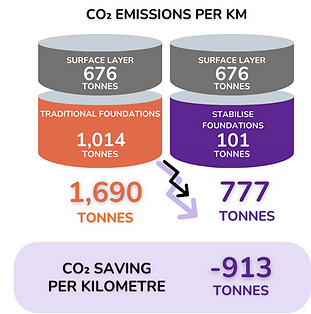
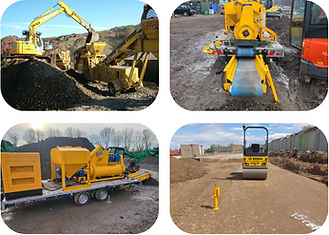
Stabilise leads in environmentally conscious infrastructure construction, achieving up to an impressive 95% reduction in CO₂ emissions for the foundation process.
Through innovation and sustainable practices, Stabilise is dedicated to minimising the environmental impact of construction, making a substantial contribution to broader goals of carbon footprint reduction and ecological sustainability in the industry.
Cutting Carbon At The Core
Our technology combines product and process
to deliver a proven solution for carbon reduction.
Stabilise is proven, approved and in use.
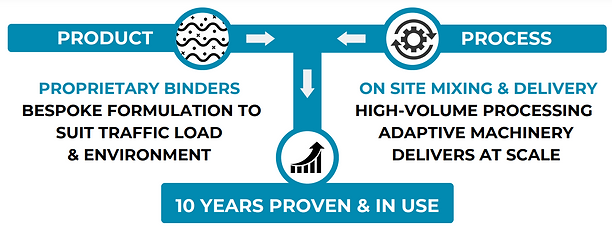
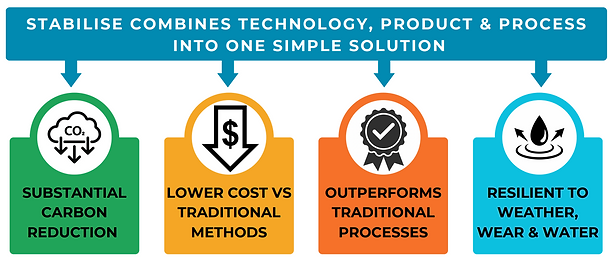
The development and upkeep of infrastructure play a significant role in carbon emissions, with waste disposal and material transportation posing notable environmental challenges.
The adverse effects of sending waste to landfills and importing new materials contribute significantly to carbon footprints.
In response, our approach focuses on on-site processing and recycling, reducing the reliance on transportation, and curbing the import of virgin aggregate. This strategy not only addresses environmental concerns but also promotes sustainable practices in the construction and maintenance of infrastructure.

Primary Application
of our Technology
Infrastructure Construction
Our proprietary blend of binders create a strong, permanent, contaminate-free solution to help build infrastructure and support sustainability goals for roads, railways, footpaths and much more.

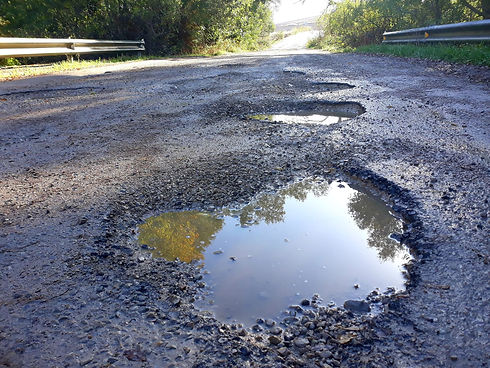
Other Applications
of our Technology
Potholes
Long-term pothole repairs reduce the growing carbon impact of typical temporary patches with asphalt, lasting for at least 10 years, up to 20 times longer industry standard repairs.
Surface Innovation
Our strong, watertight foundation supports innovative carbon-saving technologies allowing development of new types of top layer - even innovative, faster and low-cost options such as micro-asphalt or recycled asphalt (RAP) and any other innovations.

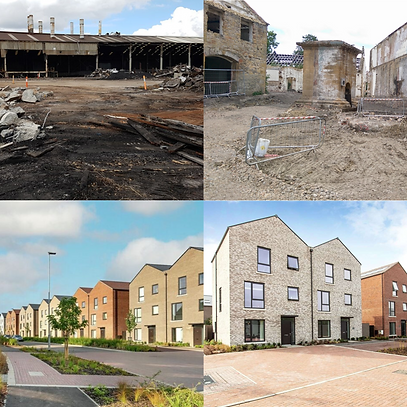
Brownfield Remediation
Stabilise transforms the economic viability of brownfield land, locking in dangerous contaminants, enabling waste ground to be made safe for development.
Reservoirs
Using our proprietary binders to build, repair, or replace the foundations of reservoirs creates a low-carbon, highly effective and secure water containment basin for longer lasting protection from leaks.
100% recycled arisings and contaminants locked in enables containment of embodied carbon across huge volumes of old concrete.
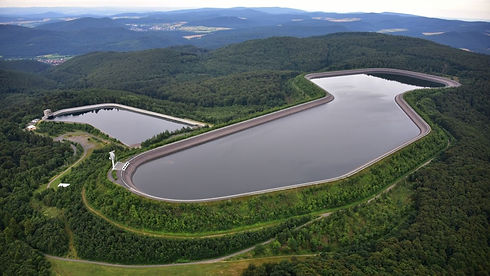

ESG
Committed to reducing GHG emissions.
Working with Governments on SDG goals.
Conforming to an ESG framework for growth.